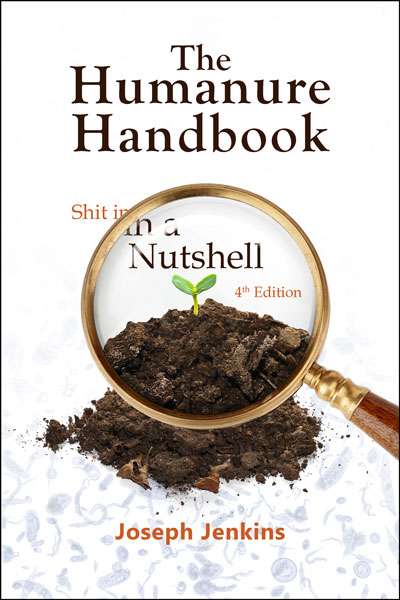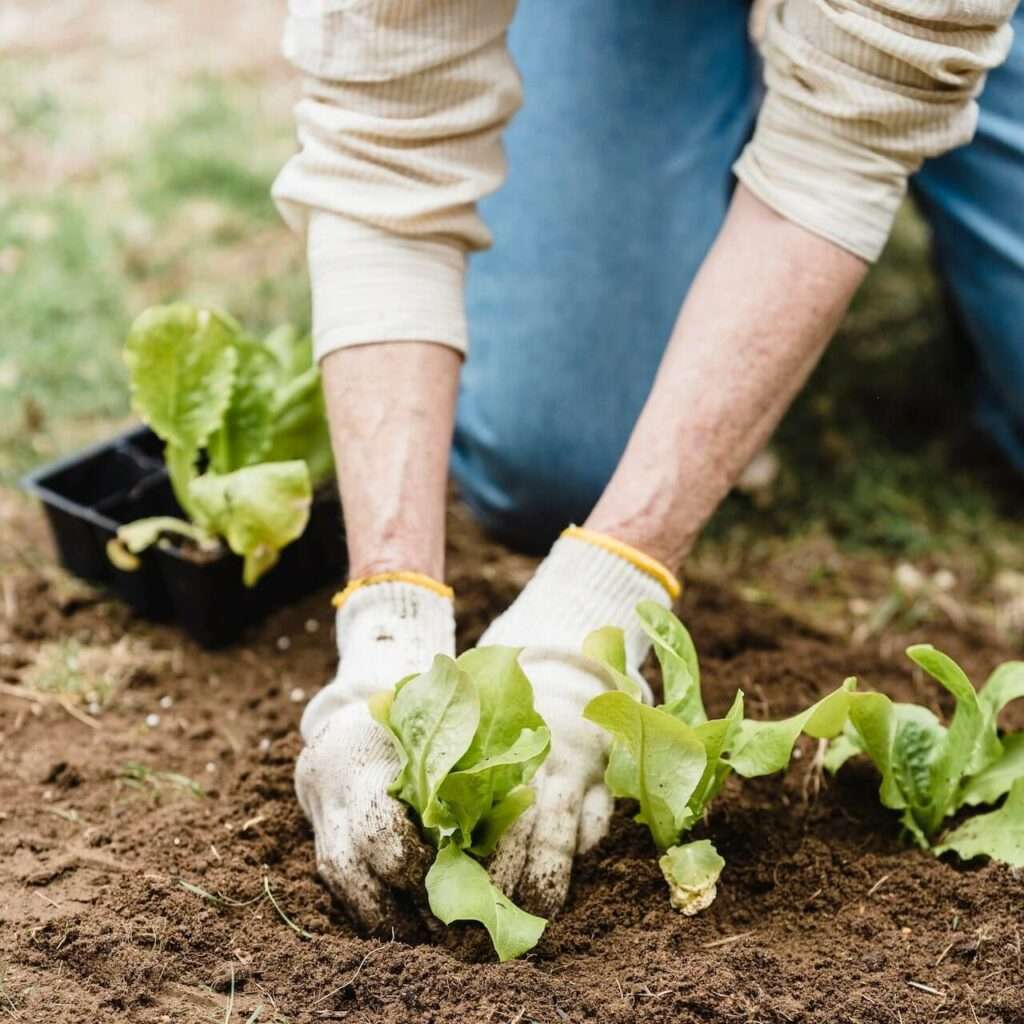Welcome to the future, where human waste is the multipurpose climate- and resource-friendly tool of choice.
In his 1996 book, The Humanure Handbook: A Guide to Composting Human Manure, Joseph Jenkins calls recycling human waste “an exercise in humility,” noting that those who do it, do it “not because they’re going to get rich and famous for it,” but because it makes them “better people.”
Jenkins writes, “The exercising of the human spirit can take many forms, and the simple act of cleaning up after oneself is one of them. The careless dumping of waste out into the world is a self-centered act of arrogance – or ignorance.”
And, according to Jenkins, when it comes to human waste, Westerners are “shit illiterate.”

“Americans make up about 4 percent of the human population, meaning that 96 percent of all people
are not Americans, and they don’t think and act like Americans,” he writes in the introduction to the fourth edition of the Humanure Handbook. “About two and a half billion of those people don’t have water toilets. They never had flush toilets, their ancestors before them never had flush toilets going back to the beginning of time, and quite likely, their descendants after them will also never have flush toilets. The infrastructure, water, and wealth required for flush toilets simply do not exist in much
of the world. There must be something else for them — a different way to have a toilet.”
This way of dealing with human waste isn’t new; for millennia, the human population (10,000 years ago humans stood at about 5 million globally compared to 8 billion today) didn’t have the convenience of indoor plumbing (or indoors at all, for that matter). But it also wasn’t as pressing a concern, at least when it came to all the poop; the planet could absorb the waste of the modest population. Research suggests our primitive ancestors dug pits away from their dwellings while later more advanced settlements designated spaces outside of villages for depositing human waste before outhouses stood just a few feet from our doors.
While it’s not a topic we toilet-adapted humans need, or like, to think about all that often (lest the toilets we take for granted don’t hold up their end of the agreement), these less advanced systems of waste management aren’t as primitive as we might think. Just ask any living-off-the-land homesteader — and prepare to make yourself comfortable as they share some deep thoughts about the benefits of composting human waste.

According to Homesteaders of America, composting human waste is a two-year process, and then “you can use it anywhere you want,” the group says. “You could use it in your garden. You could use it on your landscaping plants, in your grass, however you want to use it.”
Compostable toilet systems typically rely on hay, wood chips, and ash instead of water-based toilets, and if managed properly, there’s little risk of port-a-potty stenches, congregating flies, or disease outbreaks.
But recycling human waste is no longer just the purview of hippie homesteaders or a page out of history books. It’s got big implications for addressing both climate change and water scarcity, and a number of other industries.
Human wastewater
On Tuesday, California’s State Water Resources Control Board enacted new regulations that will see the state transform sewage waste into potable water. The decision reflects a growing acceptance of recycling wastewater for human use, and comes at a time when California is increasingly grappling with severe drought conditions, exacerbated by climate change.
The regulations, developed over more than ten years, aim to harness a portion of the vast quantities of wastewater typically discharged into the ocean. “Today heralds a new era of water reuse,” Patricia Sinicropi, executive director of WateReuse California, said in a statement following the regulation announcement.
Many California communities have already been integrating highly purified wastewater into local aquifers and reservoirs, a process known as “indirect potable reuse.” A significant portion of Orange County’s water supply for 2.5 million residents, which includes areas like Disneyland and affluent coastal towns, originates from treated waste that replenishes groundwater reserves, for example.

The new 69-page policy framework legalizes “direct potable reuse,” allowing purified wastewater to enter directly into drinking water systems across the state, without needing an environmental buffer. The technology involves a process of microfiltration, reverse osmosis, and disinfection using ultraviolet light and hydrogen peroxide. The new rules require additional steps, including ozone disinfection and biological carbon filtration, alongside enhanced pathogen removal and monitoring. In certain scenarios, this water might be sent to conventional treatment plants before reaching household taps, while in others, it could flow directly to consumers.
The technology used to purify the wastewater is similar to desalination, but experts say it is even more environmentally sustainable. It reduces waste discharge into water bodies and avoids the ecological impacts of ocean intake pipes and brine discharge associated with desalination. Moreover, treating sewage is less energy-intensive than desalinating seawater, which contains far higher levels of dissolved impurities.
Major cities like Los Angeles and San Diego, and the Santa Clara Valley Water District in the San Francisco Bay area, are also exploring direct potable recycling projects. Texas is the only other U.S. state with approved direct potable recycling systems in operation since 2014 as a response to severe drought. Now with California on board, other states are likely to follow suit, even if they don’t face water scarcity like California.
Toilet-to-tap recycling is already in place in Australia, Singapore, Namibia, and it’s in the works across Europe, too, as countries face water scarcity due to dwindling resources and increasingly dry seasons.

James Bevan head of Britain’s Environment Agency, said people need to become “less squeamish” about the idea, calling it “perfectly safe and healthy,” while acknowledging that it “is not something many people fancy.”
“We need to treat water as a precious resource, not a free good,” he wrote. “We will have to be more selective about what we use drinking water for. It makes no sense to use it to clean the car or water the lawn.
“Use water wisely” is not a slogan. It’s a guide for how to survive. Let’s follow it,” he added.
Human waste jet fuel
Human waste is also being eyed for another major industry: jet fuel. The U.K.-based company, Firefly Green Fuels, has pioneered a method for producing Sustainable Aviation Fuel (SAF) using human waste. This groundbreaking technology has passed independent tests by regulators, confirming its close resemblance to standard kerosene, the primary fuel for commercial aircraft. The aviation sector produces around 2.5 percent of global emissions, but widespread adoption of SAF could help reduce that number to make the industry net-zero by mid-century. SAF is currently produced from several renewable resources including the food and yard waste portion of municipal solid waste, woody biomass, fats, and other feedstocks.
James Hygate, Chief Executive Officer of Firefly Green Fuels, shared with the BBC the company’s strategy to identify an affordable and plentiful feedstock, leading to the selection of human waste. This choice was endorsed by independent regulators, who acknowledged the similarity of the company’s product to traditional jet fuel.
The development of this SAF took place at Cranfield University; the company says the human waste-derived SAF could reduce emissions by 90 percent compared to kerosene, even though substantial energy is required in the production process. However, Hygate emphasizes the significant emissions reduction over the fuel’s lifecycle. “[W]hen looking at the fuel’s life cycle, a 90 percent saving is mind-blowing, so yes, we have to use energy but it is much lower compared to the production of fossil fuels,” he said. The energy used in production could come from renewable resources, too, further decreasing its impact.

In an interview earlier this month with Air Cargo Week, Hygate highlighted the continuous availability of this resource, ensuring a steady supply. “Sewage is interesting to work with,” Hygate said, noting the limited disposal options currently available in the U.K., such as agricultural spreading, which he anticipates will be replaced by more efficient methods.
The U.K. government’s Department for Transport (DfT) has played a pivotal role in supporting advanced fuel projects through the Advanced Fuels Fund (AFF), launched in July 2022. With a total grant funding of £135 million (approximately $172.2 million), the fund aims to bolster the development of such projects until March 31, 2025.
Human waste is also being explored for use in home biogas as a cooking fuel and energy. Research published last year found promising results. The research team proposed a medium-scale biogas production scheme that could be a power source for schools, farm settlements, and homes. “If the energy demand is met through this research, […] rural settlements will be self-sufficient as all feedstock are readily available within each locality,” the researchers wrote.
Other research out of Australia’s University of Technology in Sydney and a separate group of researchers in Brazil, point to human waste as a tool in the sustainable production of bricks. Like cement, brickmaking is resource-intensive and a leading producer of emissions. More than 1.5 trillion bricks are made from clay annually, requiring ovens powered by fossil fuels. Replacing some of that clay with sludge from human waste could cut down on the emissions produced by the industry.

Human waste also has potential as a treatment for certain health issues via fecal transplants. In 2022, the U.S. FDA gave the first-ever approval for fecal transplant therapy. The nascent industry is expected to reach $1.75 billion by 2029.
According to Dr. Sam Forster, an FMT and microbiota expert from the Hudson Institute of Medical Research in Melbourne, fecal transplants are really more about the bacteria. For someone with a compromised digestive tract from a serious infection like C. Diff., which can be deadly, restoring bacterial balance is as critical as ridding the pathogen itself. Forster says this is more a job for existing healthy gut bacteria colonies rather than just increasing the consumption of probiotic-rich foods like yogurt.
Forster likens the effect of a fecal transplant to the benefits of reforestation. “The diversity of the ecosystem starts to come back. The trees are growing, the birds come back … Once you plant the trees, it takes time for different species to come back in,” he says.
And, according to Jenkins, using human waste in these other ways is absolutely essential to our species’ survival.
“There’s no such thing as waste until something is wasted,” he wrote in the Humanure Handbook. “Humans are a peculiar species in that they intentionally and continually create waste, as if it’s normal and expected. But where else in nature does waste exist? The word ‘humanure’ means human excrement beneficially recycled by feeding it to microbes. There is no waste involved,” he wrote.
“Because this idea is so radical in today’s world, especially in water toilet cultures, there was no word for such an organic resource. I had to create one.”
Related on Ethos:


